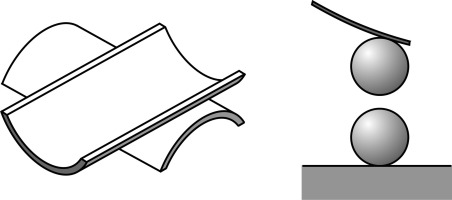当前位置:
X-MOL 学术
›
Adv. Colloid Interface Sci.
›
论文详情
Our official English website, www.x-mol.net, welcomes your
feedback! (Note: you will need to create a separate account there.)
Forces between solid surfaces in aqueous electrolyte solutions.
Advances in Colloid and Interface Science ( IF 15.9 ) Pub Date : 2019-11-22 , DOI: 10.1016/j.cis.2019.102078 Alexander M Smith 1 , Michal Borkovec 1 , Gregor Trefalt 1
Advances in Colloid and Interface Science ( IF 15.9 ) Pub Date : 2019-11-22 , DOI: 10.1016/j.cis.2019.102078 Alexander M Smith 1 , Michal Borkovec 1 , Gregor Trefalt 1
Affiliation

|
This review addresses experimental findings obtained with direct force measurements between two similar or dissimilar solid surfaces in aqueous electrolyte solutions. Interpretation of these measurements is mainly put forward in terms of the classical theory of Derjaguin, Landau, Verwey, and Overbeek (DLVO). This theory invokes a superposition of attractive van der Waals forces and repulsive double layer forces. DLVO theory is shown to be extremely reliable, even in the case of multivalent ions. However, such a description is only successful, when appropriate surface charge densities, charge regulation characteristics, and ion pairing or complexation equilibria in solution are considered. Deviations from DLVO theory only manifest themselves at distances of typically below few nm. More long-ranged non-DLVO forces can be observed in some situations, particularly, in concentrated electrolyte solutions, in the presence of strongly adsorbed layers, or for hydrophobic surfaces. The latter forces probably originate from patch-charge surface heterogeneities, which can be induced by ion-ion correlation effects, charge fluctuations, or other types of surface heterogeneities.
中文翻译:

电解质水溶液中固体表面之间的力。
这篇评论解决了通过在电解质水溶液中两个相似或不相似的固体表面之间进行直接力测量获得的实验结果。这些测量的解释主要是根据Derjaguin,Landau,Verwey和Overbeek(DLVO)的经典理论提出的。该理论引起了吸引力的范德华力和排斥双层力的叠加。DLVO理论被证明是非常可靠的,即使在多价离子的情况下。但是,只有考虑适当的表面电荷密度,电荷调节特性以及溶液中的离子对或络合平衡时,这种描述才是成功的。与DLVO理论的偏差仅在通常小于几nm的距离处表现出来。在某些情况下,可以观察到更远距离的非DLVO力,特别是在浓电解质溶液中,存在强吸附层或疏水性表面的情况下。后者的力可能源自贴片电荷表面异质性,其可能是由离子-离子相关效应,电荷起伏或其他类型的表面异质性引起的。
更新日期:2019-11-22
中文翻译:

电解质水溶液中固体表面之间的力。
这篇评论解决了通过在电解质水溶液中两个相似或不相似的固体表面之间进行直接力测量获得的实验结果。这些测量的解释主要是根据Derjaguin,Landau,Verwey和Overbeek(DLVO)的经典理论提出的。该理论引起了吸引力的范德华力和排斥双层力的叠加。DLVO理论被证明是非常可靠的,即使在多价离子的情况下。但是,只有考虑适当的表面电荷密度,电荷调节特性以及溶液中的离子对或络合平衡时,这种描述才是成功的。与DLVO理论的偏差仅在通常小于几nm的距离处表现出来。在某些情况下,可以观察到更远距离的非DLVO力,特别是在浓电解质溶液中,存在强吸附层或疏水性表面的情况下。后者的力可能源自贴片电荷表面异质性,其可能是由离子-离子相关效应,电荷起伏或其他类型的表面异质性引起的。











































 京公网安备 11010802027423号
京公网安备 11010802027423号